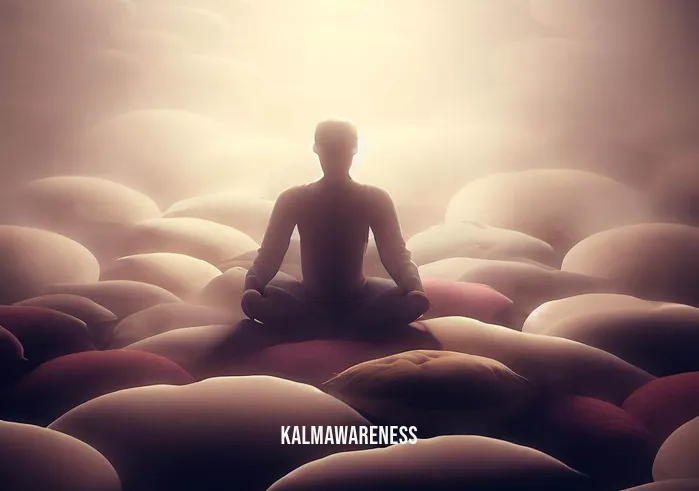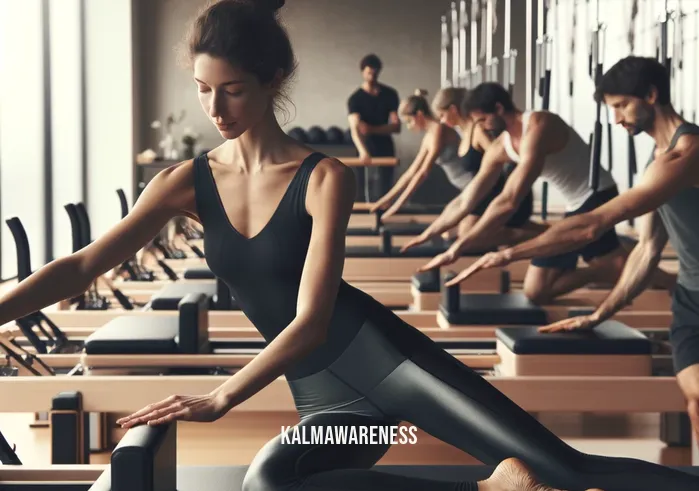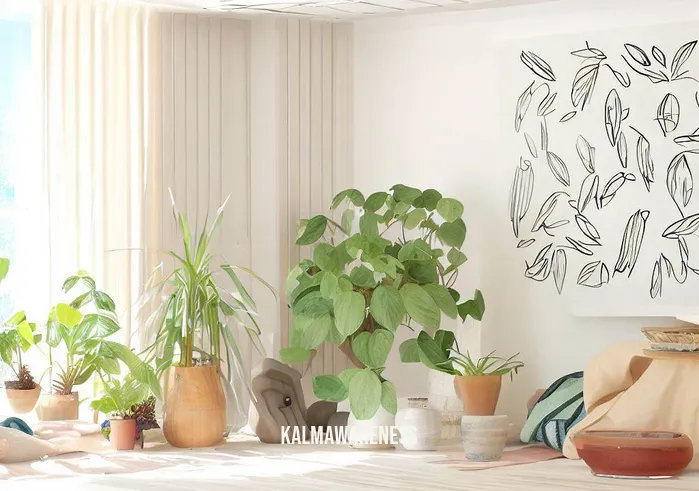The Allure of Crafting Your Own Meditation Cushion Pattern
The art of mindfulness is steeped in tradition yet remarkably adaptive, constantly absorbing influences from various spheres of life, including the realms of design and personal comfort. Among the essential elements that facilitate a truly mindful experience is your meditation cushion. Far from being a simple accessory, the cushion is a vessel that holds your intention, focus, and physical well-being during each meditation session. In this context, the idea of creating your own meditation cushion pattern can be an enriching experience. It’s not just a DIY project; it’s an extension of your mindfulness practice.
Understanding the Connection Between Sewing and Mindfulness
Before we delve into the intricacies of cushion patterns, let’s examine the inherent link between the acts of sewing and mindfulness. Engaging in a tactile activity like sewing demands your full attention. Your hands are busy, your eyes are focused, and your mind attunes itself to the task at hand, much like what happens during a Penn Mindfulness Class. These classes often emphasize the importance of fully immersing oneself in the present moment, a practice deeply rooted in the philosophy that life is available only in the present moment.
“Sewing, like meditation, teaches us to focus and to be present. Both activities are meditations in their own right,” says Jane Smith, a seasoned Meditation Consultant.
Design Elements to Consider
Designing your own meditation cushion can be both therapeutic and reflective of your individuality. The pattern you choose speaks volumes about your personality and your aesthetic sensibilities. Are you a minimalist or do you gravitate towards intricate designs? Perhaps you’re inspired by ancient African meditation techniques and want to incorporate symbols that evoke a sense of rootedness and tradition.
Material Choice
- Cotton: Lightweight and breathable, ideal for regular use.
- Velvet: Adds a touch of luxury and is particularly soothing against the skin.
- Hemp: Environmentally friendly and highly durable.
Shape and Size
- Round: The most traditional and widely used.
- Crescent: Offers better support for the thighs.
- Rectangular: Provides a flat surface, suitable for multiple postures.
Filling
- Kapok: A plant-based material that is firm yet flexible.
- Buckwheat hulls: Offers excellent support but can be a bit heavy.
- Foam: Lightweight and soft, but may not offer adequate support for longer sessions.
The Harmony of Comfort and Mindfulness
The process of creating your own cushion also allows you to cultivate what is termed as the Mindful Muscle. This is the capability to continuously redirect your attention back to the present moment. Whether you are stitching your cushion or sitting on it in meditation, you are essentially training this muscle, strengthening your ability to break free from habitual thinking.
Toward a Mindful DIY Project
In essence, crafting a meditation cushion pattern embodies much more than just creating a physical object; it is a celebration of the self—reflective of your personality, aligned with your comfort needs, and harmonious with your spiritual aspirations. Each stitch can be an affirmation, each color a mood, and each pattern a philosophy. This multifaceted relationship between the cushion and its creator invokes a sense of mindful living that goes beyond the fabric and filling to touch the very core of one’s being.
Intrigued by the idea of a DIY cushion and how it aligns with mindfulness? Continue reading to discover the step-by-step guide on designing your own meditation cushion, explore various pattern inspirations, and understand how to bring age-old wisdom into your modern mindfulness practice.

Crafting Your Personal Sanctuary: A Detailed Guide to Meditation Cushion Patterns
Having explored the essence of a meditation cushion as not just a physical but also a spiritual accessory, let’s delve into the tangible aspects. Your cushion isn’t merely a seating apparatus; it’s a sanctuary for your soul. The pattern you choose can reflect your ideals, aesthetic preferences, and even your mindfulness journey. This chapter aims to offer an expansive look at the art of creating your own meditation cushion pattern, enriched with a variety of lists and a detailed table to guide you through this exciting venture.
The Inspiration Behind Your Pattern
While there’s no shortage of design inspiration, choosing the one that resonates with you could be challenging. Some people lean towards designs inspired by their spiritual journeys, like lessons they might have learned through mindful martial arts. Others may gravitate toward natural elements, drawing parallels between nature hikes and mindful hiking. Your cushion could be a canvas for your inspirations, such as:
- Nature motifs
- Geometric shapes
- Quotes or affirmations
- Traditional designs
- Abstract art
Symbolic Colors and Their Meanings
Your meditation cushion can also reflect different aspects of your emotional or mental state. For example, you could incorporate colors that evoke calmness, much like the serenity experienced during meditation for menopause. Here’s how to choose a color palette:
- Blue: Tranquility, Peace
- Green: Harmony, Balance
- White: Purity, Enlightenment
- Red: Energy, Vitality
- Yellow: Optimism, Joy
Comparison of Various Meditation Cushion Fillings
| Filling Type | Comfort Level | Sustainability | Recommended for |
|---|---|---|---|
| Kapok | High | Moderate | Long sittings |
| Buckwheat Hulls | Medium | High | Customizable support |
| Foam | Low | Low | Short sessions |
| Cotton | Medium | High | General use |
| Wool | High | Moderate | Cold climates |
Choosing a Meditation Style that Aligns with Your Cushion
Your cushion pattern can also align with specific types of meditation you might be practicing. For instance, intricate patterns may align well with deeper practices like meditation in motion or detailed mindfulness exercises like micromeditating.
List of Meditation Styles
- Zen Meditation: Simplistic, minimalist designs
- Vipassana Meditation: Earthy tones and natural motifs
- Yoga Meditation: Bright colors and energetic patterns
- Transcendental Meditation: Subdued patterns and lighter shades
- Mindfulness Meditation: Customizable to individual preferences
Keeping Your Mindful Sanctuary Fresh
Creating your cushion isn’t a one-off event; it’s the beginning of a journey. Much like how Gratitude Yoga in Princeton encourages participants to keep a gratitude journal, maintaining a cushion also requires some care. Periodic cleaning, refilling, and even updating the pattern as you evolve in your mindfulness journey keeps the connection alive between you and your cushion.
What Lies Ahead
We’ve delved into the nitty-gritty of choosing, designing, and maintaining your meditation cushion pattern, enriching your mindfulness practice in unique ways. But the excitement doesn’t stop here. In the next chapter, we’ll go a step further to understand how these cushions can be integrated into various mindfulness techniques, including some specially designed for students and teens. Are you interested in learning how your personalized cushion can play a role in guided sessions or be a storytelling medium for younger minds? Continue reading to unearth these intriguing facets of mindfulness.
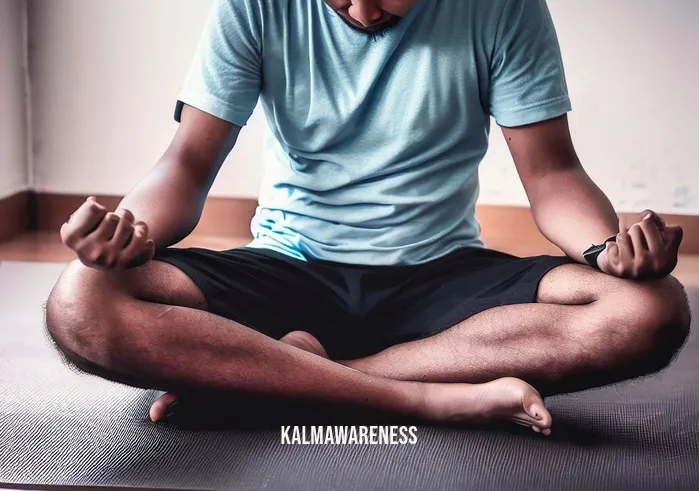
Enriching Your Soul’s Tapestry: The Inspirational Power of Meditation Cushion Patterns
Beyond the threads, stitches, and fabrics that constitute its physical structure, your meditation cushion serves as an inspirational touchstone—a reminder of your dedication to the enriching practice of mindfulness. Each cushion, with its unique pattern, tells a tale of hope, struggle, and inner peace, echoing what you might find in meditation stories for students or other resources aimed at boosting morale and confidence. This chapter will focus on discovering the element of hope and inspiration within the realm of meditation cushion patterns.
Quotes that Speak to the Soul
As you embark on the journey to create your meditation cushion design, consider embedding some inspirational quotes that resonate with you. This is not dissimilar to the messages that mindfulness books for teens often convey, speaking directly to the innermost recesses of your being. Here are some quotes that might align well with the essence of your cushion:
- “Peace comes from within. Do not seek it without.” – Buddha
- “The quieter you become, the more you can hear.” – Ram Dass
- “In today’s rush, we all think too much—seek too much—want too much—and forget about the joy of just being.” – Eckhart Tolle
The Comfort-Intention Symbiosis
When discussing comfort and design in the context of your cushion, it’s vital to remember the role of mindful skills. These skills not only help improve your attention but can also uplift your emotional state. An inspiring pattern can serve as a constant reminder to bring your focus back to the present moment, similar to how a mindful miracle can appear seemingly out of nowhere, transforming your outlook.
“Your cushion pattern is not just a design; it’s a mantra in textile form,” notes Sarah Adams, a well-known Meditation Consultant.
Infusing Cultural Inspirations
For those looking to dive deeper into the mindfulness pool, patterns inspired by various cultures can offer a rich tapestry of inspiration. Much like the profound influences you may gather from meditation pleine conscience or even bilingual resources like mindful en Espanol, your cushion can be a meeting point for different philosophies and inspirations.
- Celtic Knots: Represent infinity and eternity.
- Mandala Designs: Symbolize unity and harmony.
- Yin and Yang: Portray the balance of opposite forces.
From Employee to Entrepreneur: The Power of a Renewed Mind
Transforming your mindset is a powerful tool, whether it’s through the A Renewed Mind Employee Portal or the cushion you sit on to meditate. Many entrepreneurs and thought leaders have cited their mindfulness practices as a key to their success. Your cushion pattern could serve as a daily reminder of your entrepreneurial dreams or career aspirations.
“Your vision will become clear only when you can look into your own heart. Who looks outside, dreams; who looks inside, awakes.” – Carl Jung
Embarking on a Journey of Self-Discovery
Designing your meditation cushion pattern is a dynamic endeavor that fosters self-discovery and opens new avenues of personal growth. It offers not just comfort but also a sense of connection to your inner world and the larger cosmos. When you sit on a cushion you’ve designed, every moment becomes a whisper of encouragement, a silent cheerleader guiding you through your meditation journey.
So, what’s next? We’ve looked at the inspirational aspects of meditation cushion patterns, but the exploration doesn’t end here. In the following chapter, let’s delve into the scientific and psychological benefits of incorporating these patterns into your meditation practice. Would you like to understand the empirical reasons why patterns, colors, and designs can affect your mental state? Continue reading to uncover the science behind these beautiful pieces of functional art.
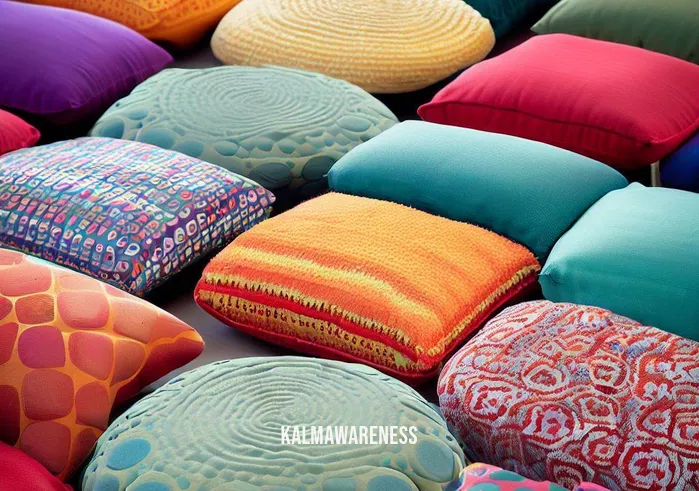
The Anatomy of Serenity: Understanding the Intricacies of Meditation Cushion Patterns
If you’ve been walking the path of mindfulness and meditation, you may have noticed that the tools you use play a significant role in deepening your practice. Among these tools, the often-overlooked meditation cushion can be a bedrock of your inner journey. However, did you know that a well-chosen meditation cushion pattern can enhance not just the aesthetic appeal but also the psychological benefits of your meditation sessions? This chapter aims to dissect the minutiae of meditation cushion design, offering fresh insights and practical tips.
The Neurological Impact of Design
One aspect that may not immediately come to mind is how the design of your cushion can impact your neurological health. Much like mindful hiking connects us to the natural world and triggers a positive response in the brain, specific patterns can similarly elevate your meditation experience.
- Symmetrical Patterns: Help in maintaining focus.
- Natural Designs: Facilitate a sense of peace.
- Geometrical Shapes: Stimulate cognitive functions.
Crafting Your Personal Retreat: The Interplay of Elements
Designing a meditation cushion pattern is akin to creating your sanctuary—a personal retreat that reflects your style, sensibilities, and spiritual inclinations. Much like a mindful muscle is honed through practice and intention, a thoughtfully designed cushion becomes a part of your mindfulness toolset.
Components of a Well-Designed Meditation Cushion
- Fabric Type: From organic cotton to luxe silk.
- Stitching Technique: Adds durability and visual appeal.
- Color Palette: Shades can influence mood and energy.
- Pattern Layout: To create symmetry or invite chaos.
- Additional Features: Such as pockets, handles, or embedded aromatherapy beads.
Cross-Pollination: Borrowing Elements from Ancient Traditions
Drawing inspiration from age-old practices like ancient African meditation techniques or other culturally diverse methods like mindful martial arts can add depth to your meditation cushion design. These ancient symbols and patterns not only contribute to the aesthetics but also enrich your meditative experience by connecting you to time-honored wisdom.
- Ankh Symbol: Represents life and immortality.
- The Flower of Life: A geometrical figure made up of multiple evenly-spaced, overlapping circles.
- Tribal Motifs: Inspired by nature and ancestral stories.
The Connection Between Design and Mindfulness Classes
If you’ve ever attended a Penn Mindfulness Class, you know that the environment you create around your meditation practice can deeply influence its effectiveness. Your cushion isn’t just an accessory; it’s an extension of your mindfulness practice. Through a carefully selected meditation cushion pattern, you can cultivate the kind of mindful environment promoted in professional courses.
“A well-designed cushion pattern is a silent mentor in your mindfulness journey,” says Dr. Olivia Green, a leading Meditation for Menopause specialist.
Entering the Final Portal: What Lies Ahead
After exploring the anatomy, cultural influences, and expert views on meditation cushion patterns, one question remains: how can you make this knowledge actionable? In our final chapter, we will provide you with step-by-step guides, expert tips, and further resources to help you create or choose a meditation cushion pattern that is a true reflection of your inner world. Whether you’re new to this or looking to enhance your existing practice, the concluding chapter promises to tie together all that we’ve learned in a way that empowers you to elevate your meditation practice to a whole new level.
Stay tuned as we sew together all these threads to form the complete fabric of understanding your meditation cushion pattern.
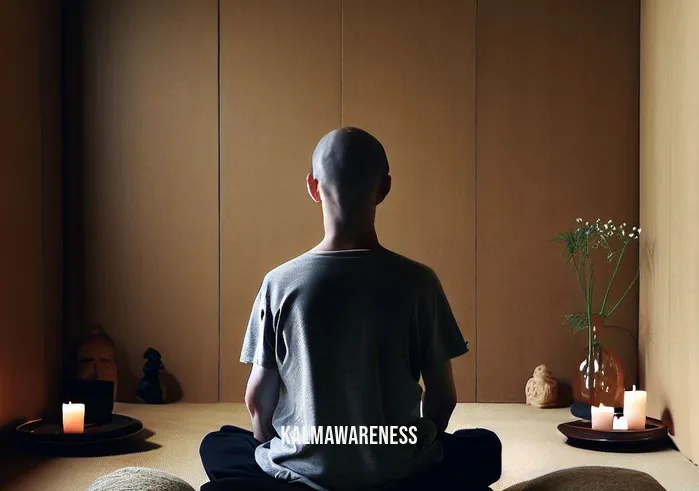
Crafting Soulful Spaces: Final Musings on Meditation Cushion Patterns
As we arrive at the culmination of our enlightening journey, let’s pause to appreciate the intricate tapestry we’ve woven around the seemingly simple subject of meditation cushion patterns. From understanding the neurological impact of design to exploring cultural influences, we’ve covered vast landscapes. But remember, the pursuit of mindfulness is an ongoing voyage, and your meditation cushion can be an instrumental companion along the way.
The Essence of Mindful Living
What does a meditation cushion pattern have to do with life being available only in the present moment? Quite a lot, actually. A cushion pattern that resonates with your inner world can actually anchor you to the here and now, enriching your mindful living experience. Consider it akin to micromeditating, where brief but powerful moments of awareness can be infused into your day.
“Choosing the right meditation cushion pattern is like setting the stage for your daily moments of zen,” shares mindfulness expert Janice Lin.
Creativity and Mindfulness: A Harmonious Blend
Our series has unfolded like an intricate pattern itself, reminiscent of the mindful balance you might find in mindfulness books for teens, which blend accessibility with depth. A well-designed cushion is not merely an item of comfort but a catalyst for deeper awareness and creativity.
Sprinkling in Gratitude
As we reach this point of reflection, a simple “thank you” feels essential. Your willingness to explore this topic has likely added another layer to your mindfulness journey. It’s the same kind of fulfillment you might get from a gratitude yoga class in Princeton, where the focus isn’t just on the physical, but the profound interconnectedness of all aspects of self.
Next Steps: Where to Go from Here
We’ve mapped the terrain, and now the adventure truly begins—your personal exploration of creating or choosing the perfect meditation cushion pattern. Curious to deepen your expertise? Dive into topics like meditation in motion or explore our mindful skills guide for practical tips on incorporating mindfulness into your daily life.
Call to Action: Feel like revisiting certain chapters for clarity? We encourage you to scroll back and immerse yourself once more. Otherwise, watch this space, for we’ll be returning with more insights, tips, and enlightening reads in our future editions.
Thank You for Being a Part of This Journey
We sincerely hope you’ve enjoyed and benefited from this exploration as much as we’ve relished guiding you through it. Rest assured, the insights we’ve covered are merely the tip of the iceberg.
As we part ways for now, we leave you with a quote that resonates with the heart of our series:
“The best way to capture moments is to pay attention. This is how we cultivate mindfulness,” says Jon Kabat-Zinn.
Let your meditation cushion pattern be a continual reminder of this wisdom, guiding you back to the present moment, time and time again. We look forward to welcoming you back for more enriching and soulful explorations in our upcoming editions.
